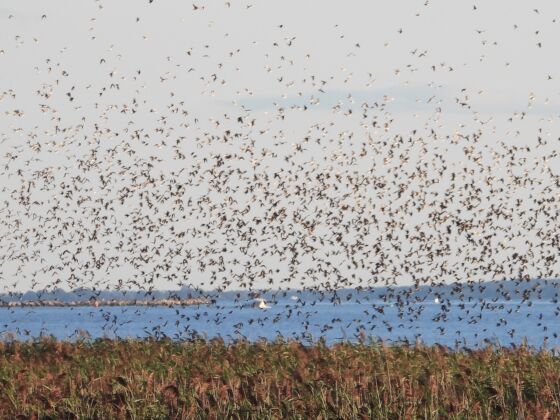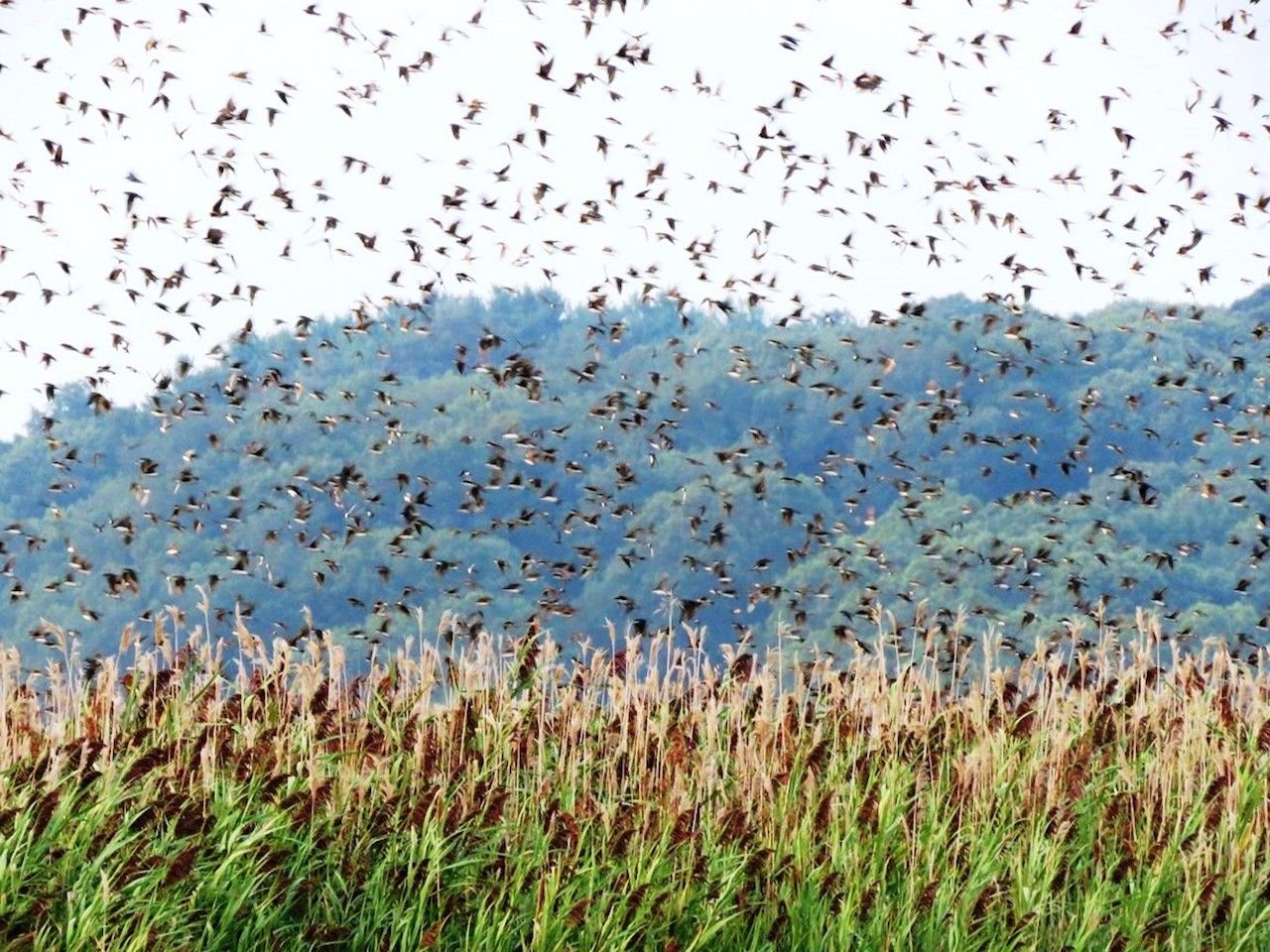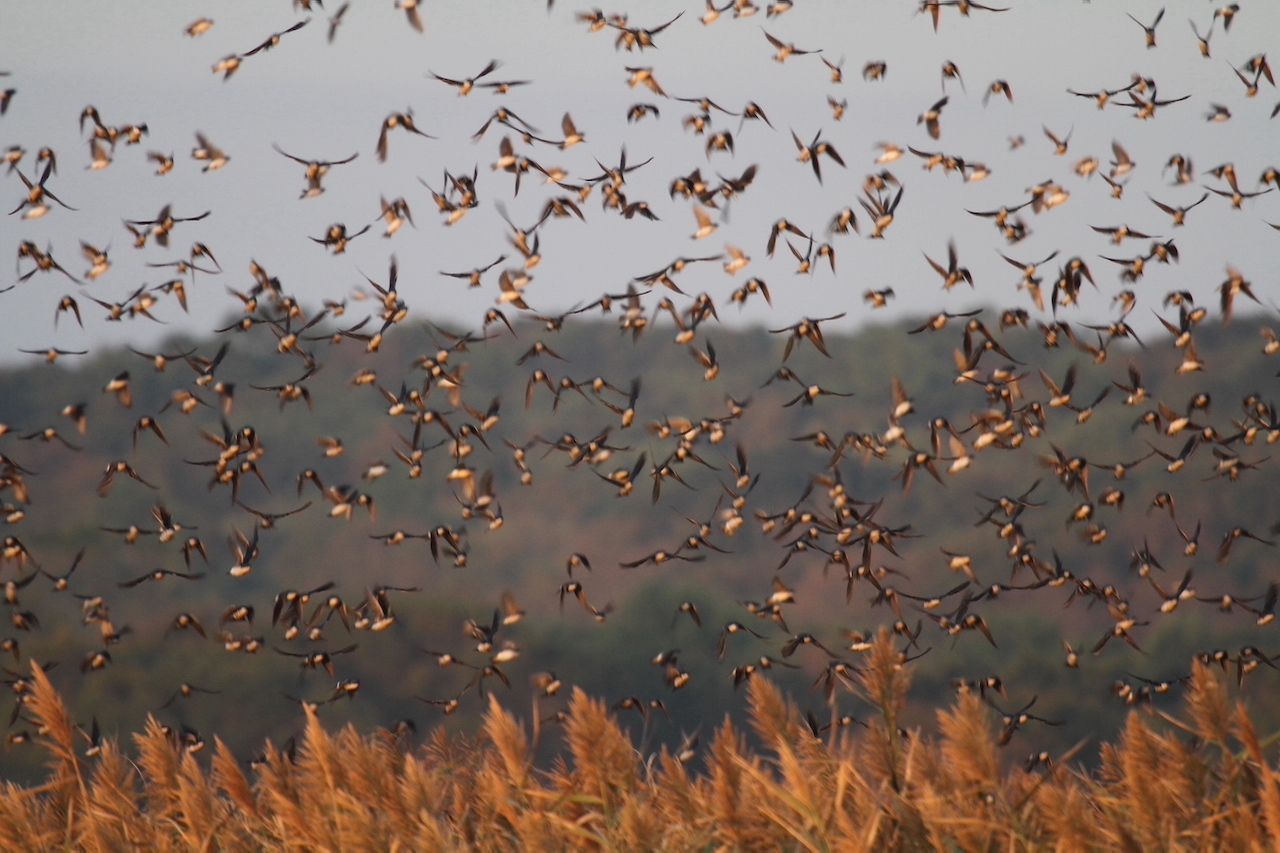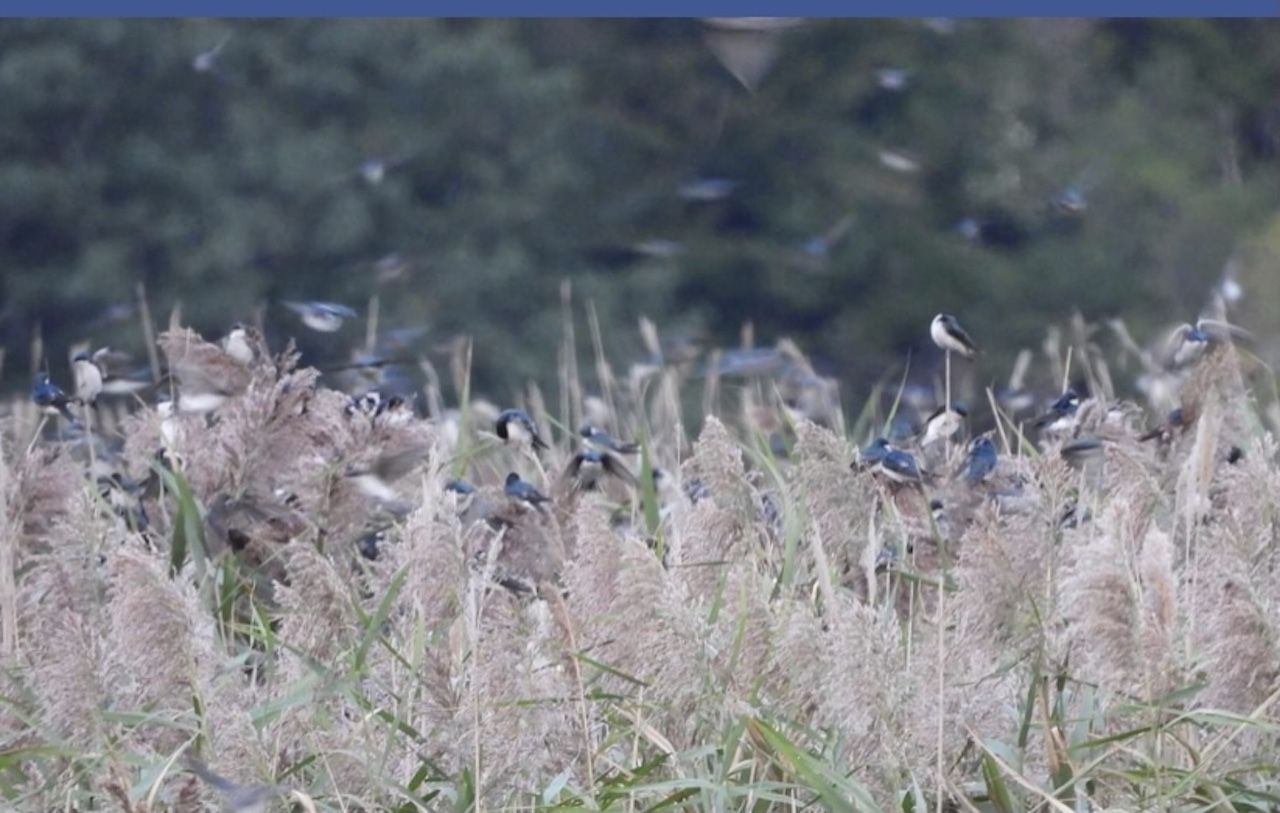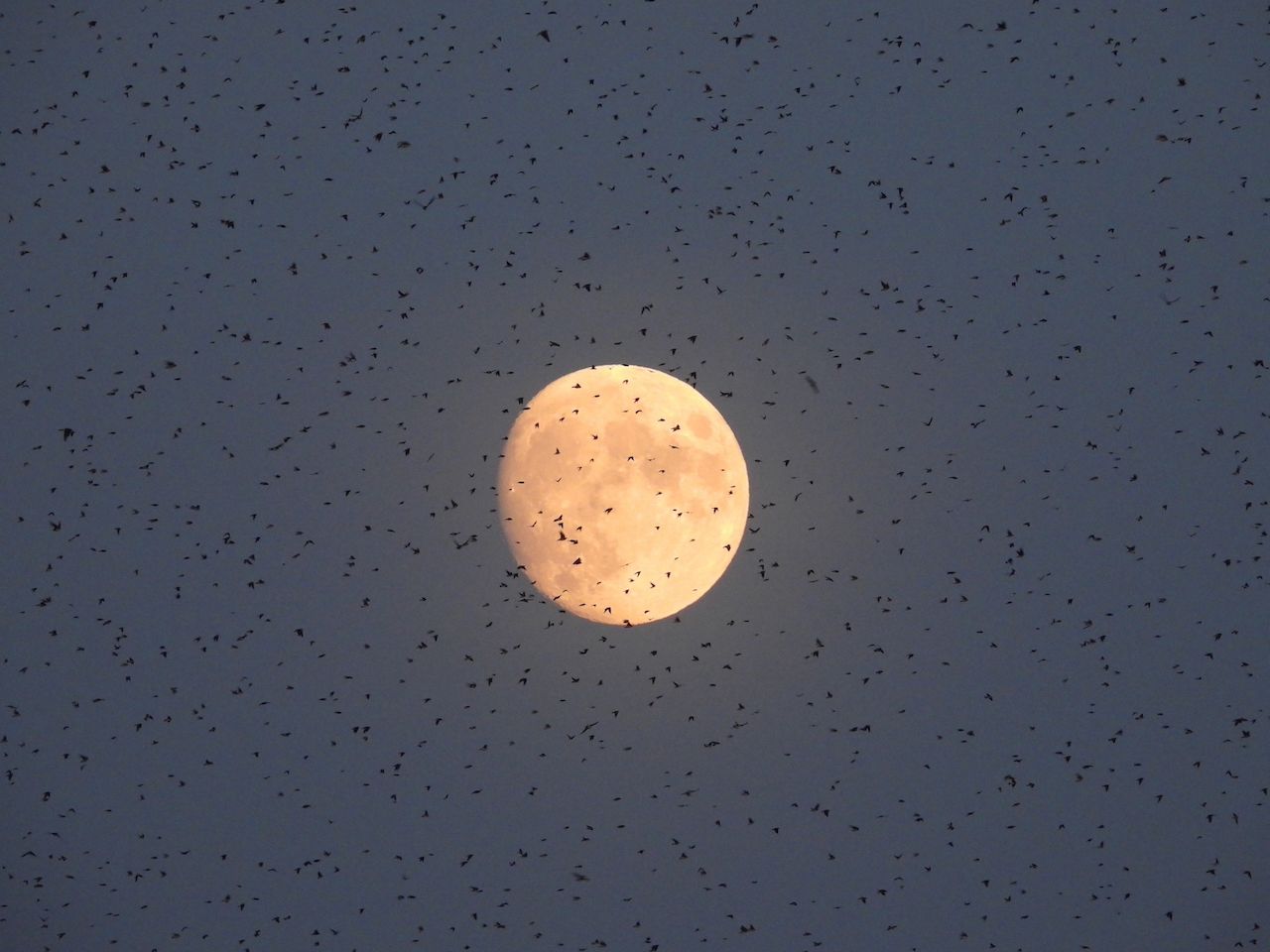This is the monthly Wildlife Spotlight, where we highlight the best time to see certain animals in all their splendor. You can use these free apps to monitor wildlife in your travels and contribute to conservation efforts.
As the dusk begins to settle over the mouth of the Connecticut River, the first of the Tree Swallows begins to litter the sky like ashes from a campfire. Soon their numbers climb into the hundreds of thousands in this, the beginning of their evening ritual during the swallows’ annual autumn migration. Clusters of swallows combine, creating both small and large flocks.
They weave and sway in unison, miraculously never colliding. When the time is right, the swallows, some years half a million strong, gather closer and closer together. They fly like one, swirling upwards, then down, left, and then right. Finally, through some secretly communicated directive, the flock knows to rise one last time before descending in a thick tornado-like cloud to nest among the reeds for the night.
